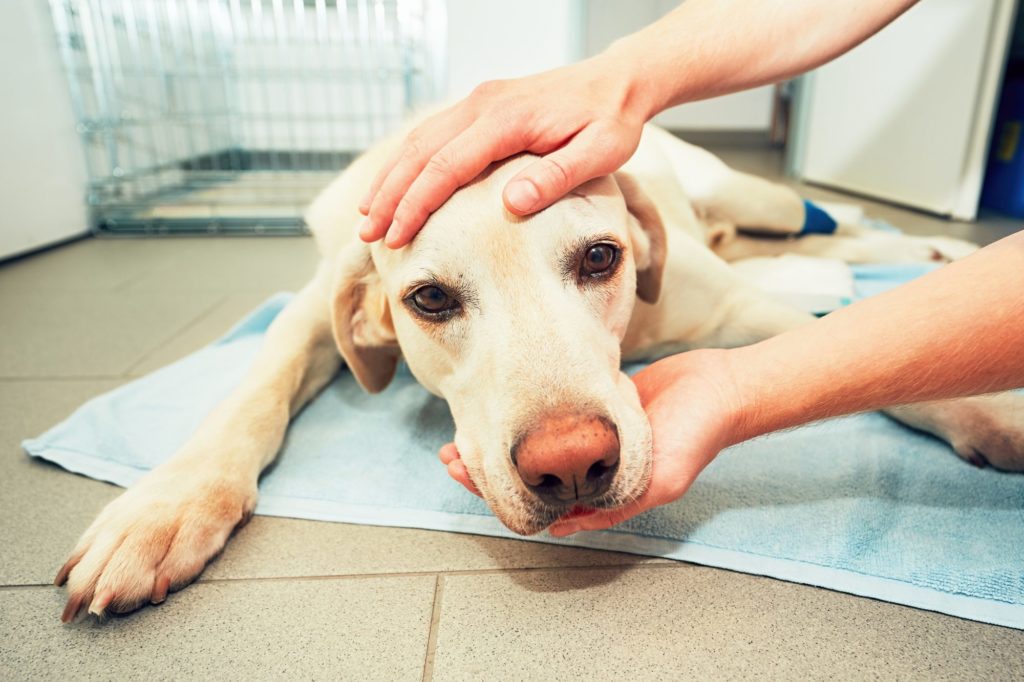Throughout the life of our pets, it is normal for certain diseases to appear in their body. Depending on the breed, the frequency of these will be higher or lower. However, there are pathologies that we do not expect because they are rare. Seizures in dogs can fit perfectly into this group. But what is considered a canine seizure? This type of pathology appears when our pet’s brain becomes unbalanced, causing a failure in its neurons’ excitation and inhibition signals. This situation causes the brain to send electric shocks that result in the dog’s attacks. What are the symptoms in which this pathology manifests itself? Seizures in dogs are evident when they have tremors, strong shaking, and heavy drooling. Depending on the breed, age, subsequent attacks, physical condition, and history of injuries of the dog, our pet will have a greater chance of suffering some type of seizure. Learn more about seizures in dogs in this article!
CAUSES OF SEIZURES IN DOGS
Seizures are not symptoms that are related to a single disease or cause. One of the complications of this type of neuronal dysfunction is the large number of pathologies to which it can be related. The conditions that can be associated with this symptom are the following:
– EPILEPSY
From the first moment they appear, seizures are commonly associated with epilepsy. Although it is usually one of the best known and most widespread pathologies, it is unnecessary to make hasty diagnoses without a veterinary evaluation. The first epileptic seizures occur in dogs from six months to five years of age. We’re talking about a hereditary disease that causes loss of consciousness, prostration, pedaling, salivation, defecation, urination, and – the aforementioned – seizures.
– ENCEPHALITIS OR MENINGITIS
Inflammation of the brain or meninges can be two causes that lead to your dog’s seizure. They are usually caused by a viral infection such as canine distemper, ehrlichiosis, or toxoplasmosis.
– METABOLIC DISEASES
These pathologies are varied and cause significant losses in dog metabolism: hepatitis, hyperlipoproteinemia, hyperthermia, hypocalcemia, etc.
– CARDIOVASCULAR ACCIDENTS
With these types of abnormalities, the amount of blood reaching the brain is not ideal, resulting in dogs’ cardiovascular failure. Some examples of this type of accident are strokes and brain hemorrhages.
– CONGENITAL MALFORMATIONS
One of the most common is hydrocephalus, a disorder that consists of an abnormal increase in the amount of cerebrospinal fluid in the brain’s cavities. This liquid is responsible for eliminating the waste produced by the continuous functioning of the nervous system. It is a common pathology in the following breeds: Yorkshire Terrier, Chihuahua, Pomeranian, Toy Poodle, Boston Terrier, and Maltese.
– BRAIN TUMOR
In the worst-case scenario for our faithful companion, a tumor may be behind such seizures in dogs. The appearance of the tumor can damage the brain mass and cause this type of abnormal behavior.
– SUBSTANCE USE INTOXICATION
The chemical components of this type of substances damage the brain of our pet. Antifreeze for cars, toxic pesticides, external dewormers, lead, cyanide, or metaldehyde, among others, head the harmful substances for our pet.
– HEAD TRAUMA
A blow stronger than normal can lead to seizures that our dog has not experienced to date. Faced with any of these causes, the most advisable thing is, without a doubt, to go to the vet and give us an exact diagnosis.
PHASES OF SEIZURES IN DOGS

In general, in seizures, several stages can be contemplated that will allow us to detect in advance what happens to our dog and, in this way, be more likely to guarantee its health. Read carefully the three phases that we show you!
– PRE-STROKE PHASE
Its duration varies from a few minutes to several days. The dog begins to behave strangely and is nervous for no apparent reason. Some of the symptoms of this phase are tremors, confusion, incoordination, and excessive salivation.
– STROKE PHASE
It is a period that can last several seconds or minutes. The dog usually loses consciousness and falls sideways to the ground. Then he begins to pedal unconsciously. Also, the dog is likely to vomit, urinate, and defecate.
– POST-STROKE PHASE
It is a stage that will allow us to measure how intense the seizure our dog has suffered has been. It is likely that, if it has been strong enough, the dog will manifest certain consequences that will last several days: confusion, blindness, tremors, etc.
HOW TO ACT BEFORE AN ATTACK OF SEIZURES IN DOGS?

It is logical and normal that in a situation of these characteristics, nervousness takes hold of us. As it is something that we do not expect, likely, we will not act appropriately. Therefore, we show you everything you should do and everything you should avoid when your dog suffers a seizure.
WHAT SHOULD I DO IF MY DOG HAS A SEIZURE?
Staying calm is the first thing to do. In extreme circumstances of this type, we will think much better if we keep our minds quiet and without nerves. Once we are calm, we will have to remove any object near our dog so that it does not hurt itself. Once the attack has passed, we must move our pet to a cool and ventilated place.
Otherwise, its recovery could worsen. Immediately afterward, what you should do is take your faithful companion to the nearest vet. With a precious professional diagnosis, you will be able to discover what caused the dog’s seizure. In the days, weeks, and months that follow, you should give your dog the appropriate medication prescribed by the vet. It is important to be consistent in this regard. If, even so, the attacks continue, it will be necessary to take him back to the vet.
WHAT SHOULDN’T YOU DO?
In full attack, a common behavior on the owners’ part is to try to grab the dog so that it does not wobble. This is a clear mistake! That’s because, apart from the fact that the seizure is not going to stop – the dog is not conscious at that moment and could injure the person (through a bite or a scratch). Nor should food or water be given to the dog in full seizure. In no way is it convenient to place objects that provide heat to the dog.
Therefore, you should avoid covering him with blankets, sheets, clothing, etc. Finally, the dog should not be given medications that the veterinarian has not prescribed. Don’t do diagnostics on your own! Seizures in dogs, in most cases, cannot be avoided. For this reason, we recommend that you have a trusted veterinarian so that you can take care of your dog in the best possible way.


